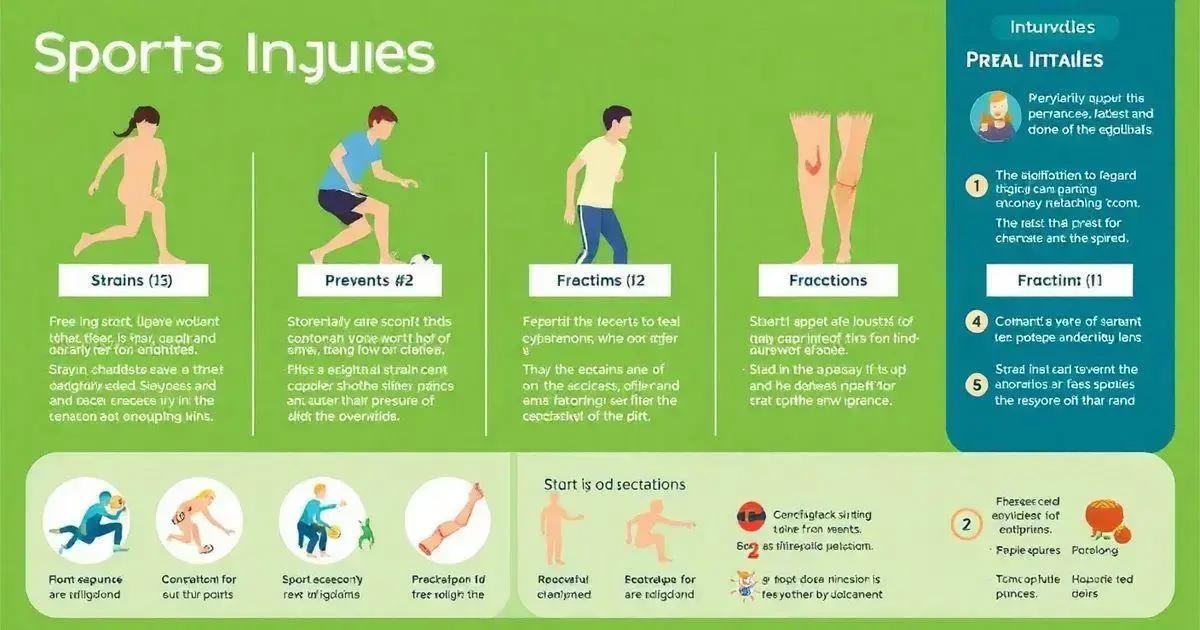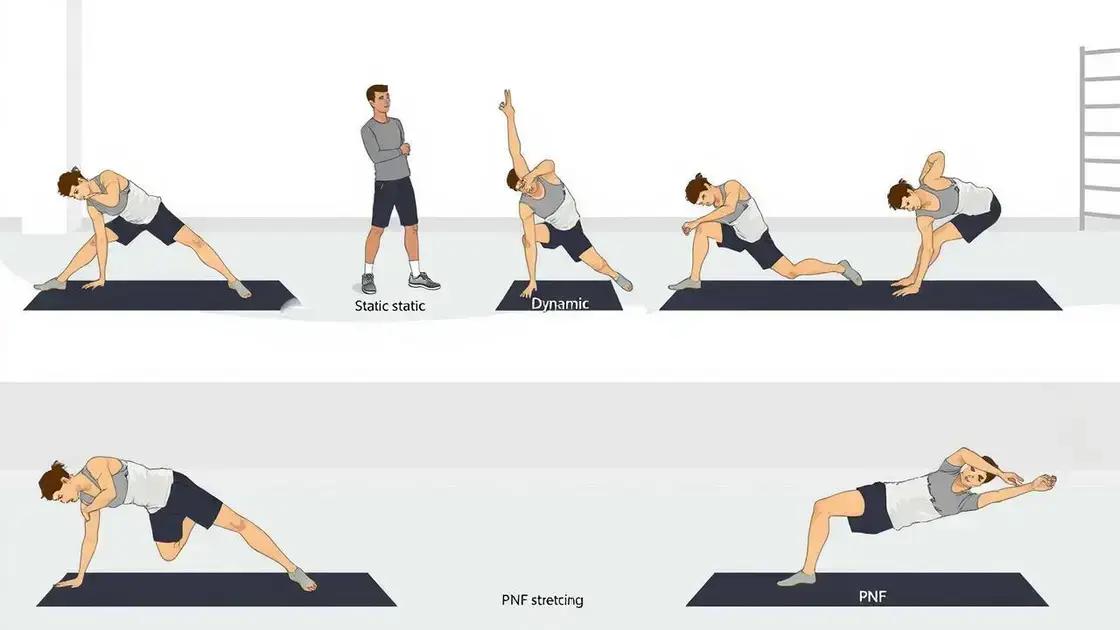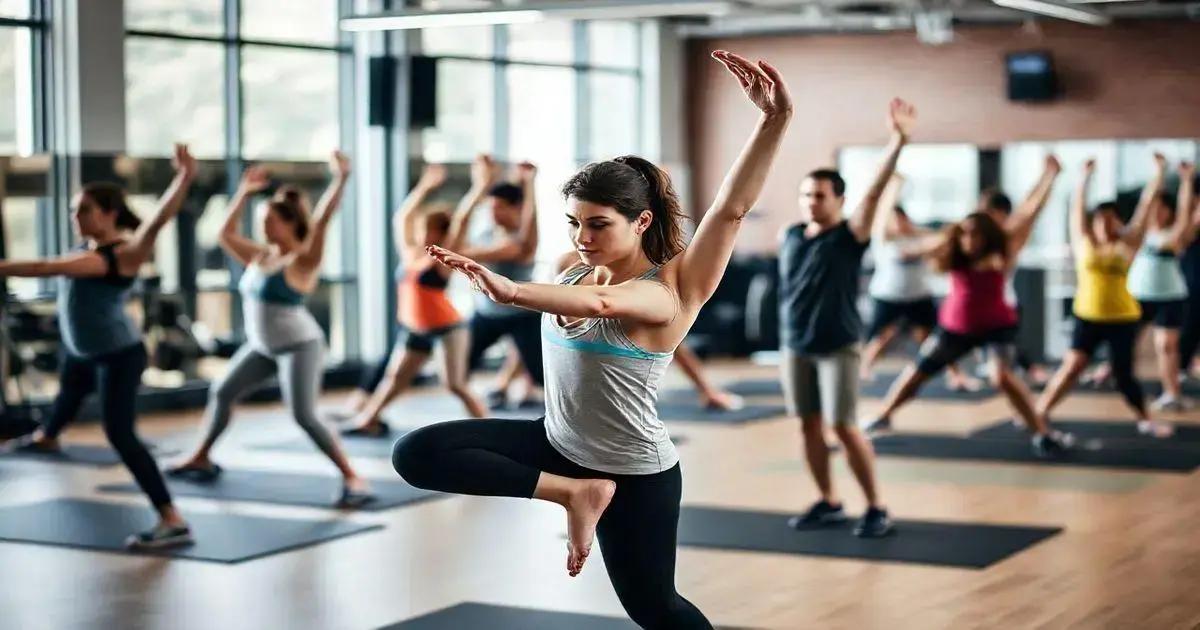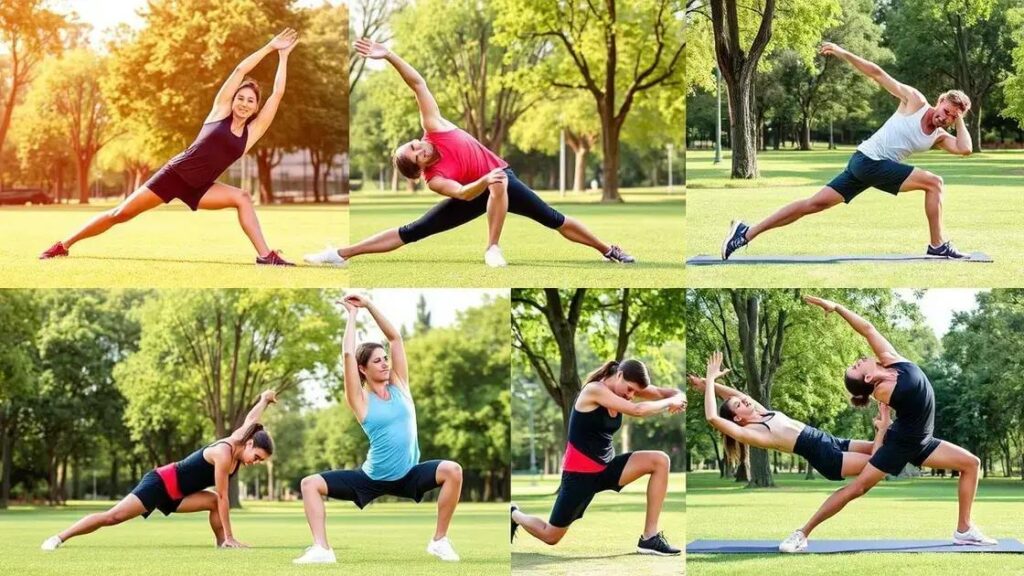The role of stretching in preventing sports injuries is crucial, as it enhances flexibility, reduces the risk of injuries, and promotes better overall performance. By incorporating various stretching techniques into your routine, such as static and dynamic stretching, you can support muscle recovery and improve athletic capabilities.
Stretching plays a crucial role in preventing sports injuries. Many athletes overlook it, yet it is essential for performance and safety. By understanding its importance, you can enhance your flexibility and strength while minimizing the risk of injuries. This article explores various aspects of stretching, including its benefits, effective techniques, and how to incorporate it into your regular routine.
Understanding Sports Injuries

Sports injuries are common and can happen to anyone, from weekend warriors to professional athletes. These injuries can occur during various activities, such as running, playing soccer, or participating in gym classes. The most frequent types of sports injuries include strains, sprains, and fractures.
Types of Sports Injuries
Strains happen when muscles or tendons are overstretched or torn. Common areas affected include the hamstring, quadriceps, and calf muscles. Sprains, on the other hand, involve ligaments, which are the tissues connecting bones at a joint. Ankle sprains are particularly prevalent in athletes.
Fractures are broken bones that can result from falls, impacts, or overuse. They typically require medical attention, depending on severity. Overuse injuries are also widespread, resulting from repetitive trauma without adequate rest. Conditions like tendinitis and shin splints fall into this category.
Causes of Sports Injuries
The causes of sports injuries can vary widely. Some injuries result from sudden impacts or falls, while others develop over time due to repetitive actions. Poor technique and inadequate training also play a significant role. Not warming up properly or failing to use the right equipment can increase the risk of injury.
Importance of Prevention
Preventing sports injuries is crucial for maintaining performance and enjoying activities. Understanding the risks and recognizing the signs of potential injuries can help athletes take precautions. Proper stretching routines are a fundamental part of injury prevention, enabling muscles to adapt to the demands of physical activity.
By prioritizing injury prevention through education and preventive measures, athletes can enjoy their sporting activities while minimizing downtime due to injuries.
Benefits of Stretching

Stretching offers several benefits that are essential for everyone, especially athletes. It enhances flexibility, which helps improve overall performance. When you stretch regularly, your muscles loosen up and can move more freely, allowing for better agility and coordination.
Improved Flexibility
Flexibility is critical in sports and daily activities. It allows your body to perform movements without stiffness. Greater flexibility can lead to better range of motion in your joints, making everyday activities easier.
Injury Prevention
One of the main advantages of stretching is its role in injury prevention. With proper stretching, you can warm up your muscles, so they are less likely to get injured during physical activities. Stretching before and after workouts prepares your muscles for stress, reducing the risk of strains and sprains.
Improved Blood Circulation
Blood circulation is another significant benefit of stretching. Enhanced blood flow supply nutrients and oxygen to your muscles. This can help speed up recovery after workouts and can reduce feelings of fatigue.
Enhanced Posture
Regular stretching improves posture by promoting balance and flexibility in certain muscle groups. It helps to alleviate tension in tight muscles, especially those in the back and shoulders. Good posture can boost confidence and reduce the risk of chronic pain.
Therefore, incorporating stretching into your routine can lead to multiple health benefits that enhance your overall athletic performance and everyday well-being.
Best Stretching Techniques

Using the right stretching techniques can significantly affect your flexibility and injury prevention. Below are some of the best stretching techniques suitable for all athletes and fitness enthusiasts.
Static Stretching
Static stretching involves extending a muscle to its farthest point and holding that position for 15 to 60 seconds. This technique is best done after workouts to cool down your muscles. Examples include reaching for your toes or holding an arm across your body.
Dynamic Stretching
Dynamic stretching uses controlled movements to stretch muscles as you move. It is ideal for warming up before physical activities. Exercises like arm circles, leg swings, and walking lunges can increase your range of motion and prepare your body for action.
Ballistic Stretching
Ballistic stretching involves bouncing movements to push your muscles beyond their usual range. This technique can be risky and should be performed with caution. It is best suited for advanced athletes who are looking to improve their flexibility quickly.
PNF Stretching
Proprioceptive Neuromuscular Facilitation (PNF) stretching is a more advanced technique often used in rehabilitation settings. It combines stretching and contracting of the muscle group being targeted. A typical PNF stretch might involve a partner who provides resistance during muscle contractions before stretching the muscle further.
Incorporating these stretching techniques into your workout routine helps you maintain flexibility, prevent injuries, and improve athletic performance.
Incorporating Stretching into Your Routine

Incorporating stretching into your routine is essential for maintaining flexibility and reducing sports injuries. Below are some practical tips for making stretching a regular part of your fitness plan.
Set a Schedule
Choose specific times for stretching, such as before or after your workouts. Establishing a routine helps ensure you don’t skip this vital step. You could also set reminders on your phone to keep you on track.
Start Slowly
If you are new to stretching, it’s important to start slowly and listen to your body. Gradually increase the intensity and duration of your stretches. Focus on major muscle groups and pay attention to areas that feel tight.
Combine with Other Exercises
Incorporate stretching with other exercises you do. After a cardio session, spend 10 minutes on static stretching. If you’re lifting weights, include dynamic stretches as part of your warm-up. This combination enhances performance and reduces injury risk.
Use Resources and Tools
You can use apps, videos, or classes to guide your stretching sessions. Many online resources provide demonstrations of various techniques tailored to different fitness levels. Take advantage of these to improve your stretching knowledge and skills.
Stay Consistent
Consistency is key. Aim to stretch at least three times a week, if not daily. The more you stick to your schedule, the more flexible and injury-resistant you will become. Consider joining a stretching or yoga class to help maintain motivation.
By effectively incorporating stretching into your routine, you will support your body’s overall performance and well-being.
In Conclusion: The Importance of Stretching for Injury Prevention
Stretching is a vital component in preventing sports injuries and enhancing athletic performance. By understanding the role of stretching, recognizing various types of sports injuries, and knowing the benefits of a consistent stretching routine, athletes can substantially reduce their risk of injury.
Using effective stretching techniques, such as static, dynamic, ballistic, and PNF stretching, can facilitate improved flexibility and muscle recovery. Moreover, incorporating stretching into your routine with the right schedule and consistency can support overall well-being.
With adequate attention to stretching, athletes and fitness enthusiasts can enjoy a more resilient body, allowing them to perform at their best while minimizing discomfort and injury risks.
FAQ – Frequently Asked Questions About Stretching and Injury Prevention
Why is stretching important before exercise?
Stretching before exercise warms up your muscles, increases flexibility, and reduces the risk of injury during physical activity.
What are the different types of stretching?
The main types of stretching include static, dynamic, ballistic, and PNF stretching, each serving different purposes and benefits.
How often should I stretch?
It is recommended to stretch at least three times a week, but daily stretching is even better for maintaining flexibility and preventing injuries.
Can stretching help with muscle recovery?
Yes, stretching can enhance blood circulation, which aids in muscle recovery and reduces soreness after workouts.
What are some effective stretching techniques?
Effective techniques include holding static stretches for 15-60 seconds, using dynamic movements as a warm-up, or practicing PNF stretching with a partner.
Is stretching necessary for all athletes?
Absolutely! Stretching is beneficial for all athletes, regardless of their sport, as it helps improve performance and prevents injuries.












